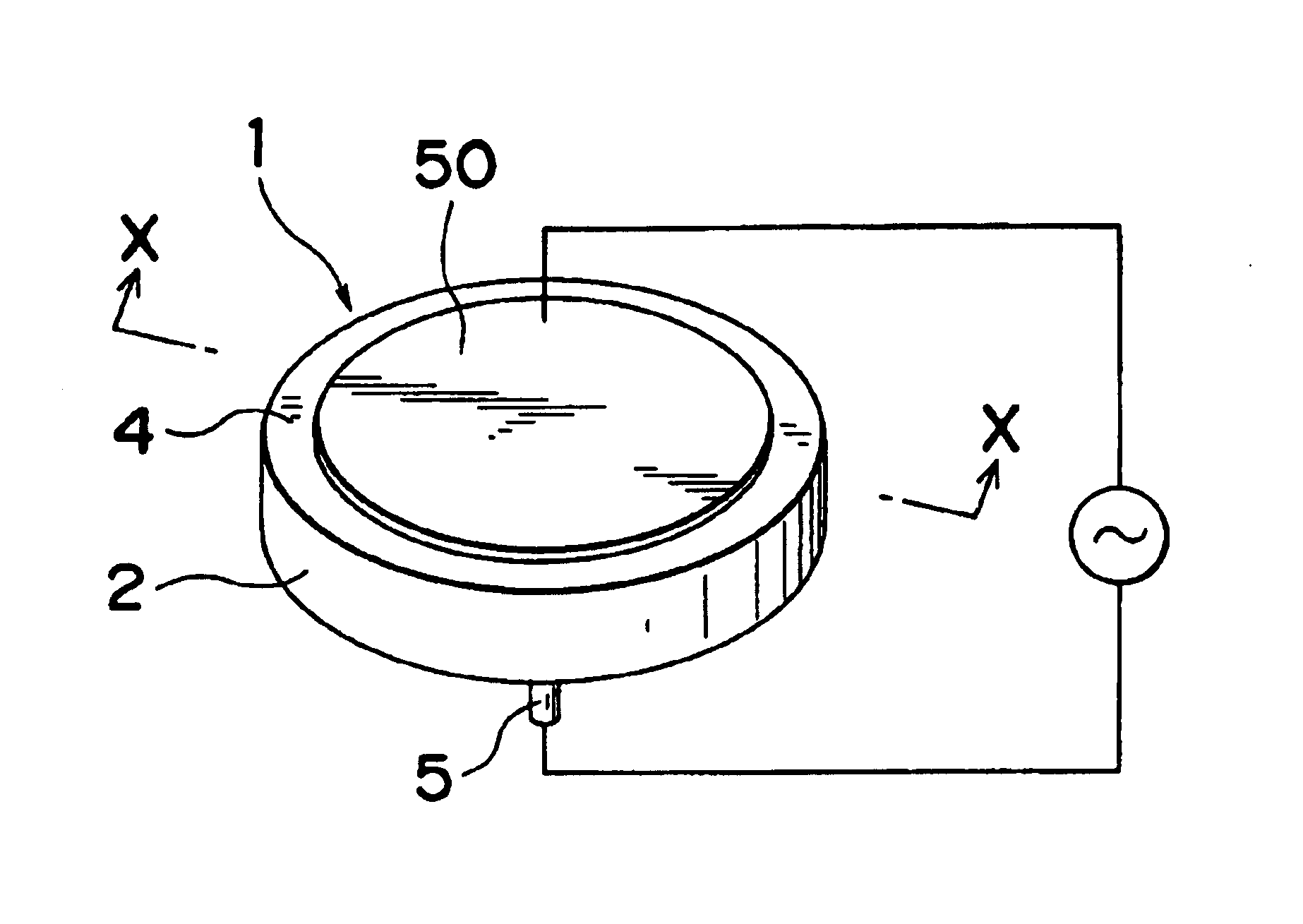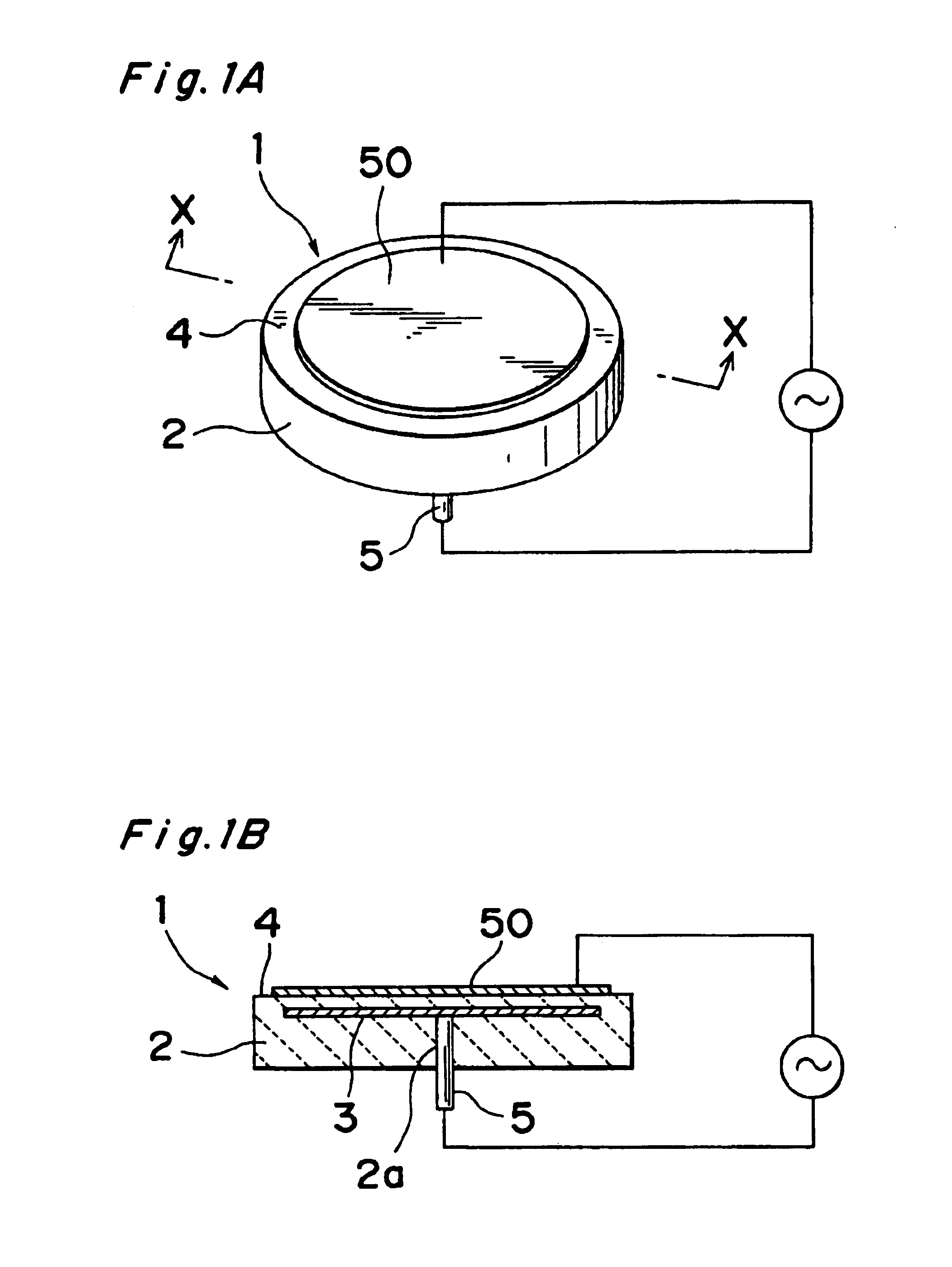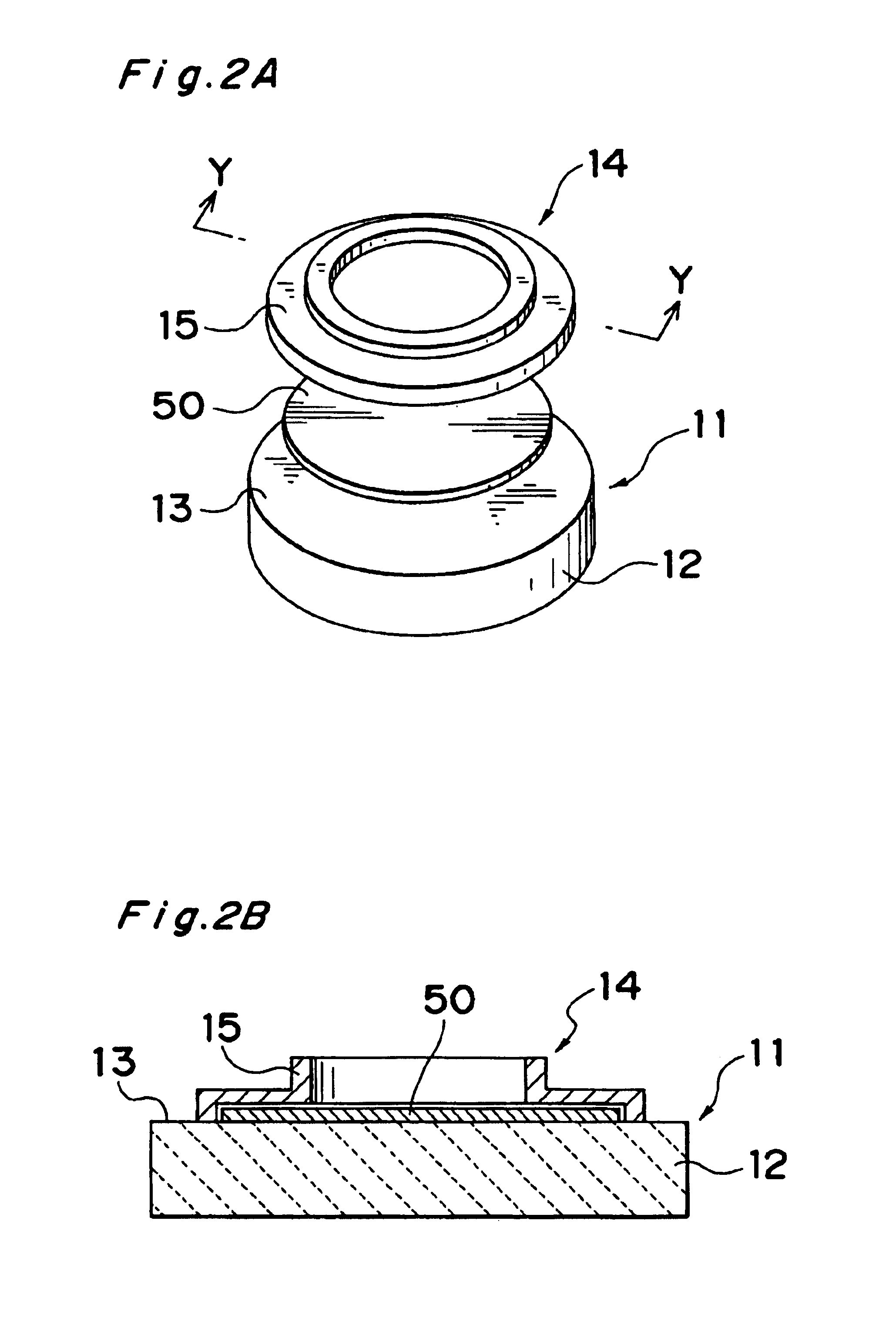Ceramic material resistant to halogen plasma and member utilizing the same
- Summary
- Abstract
- Description
- Claims
- Application Information
AI Technical Summary
Benefits of technology
Problems solved by technology
Method used
Image
Examples
embodiment 1
[0073]In this embodiment, the corrosion resistance of the ceramic material of the present invention made up of the composite metal oxide was tested.
[0074]Using various oxide powders, samples listed in Table 1 were prepared. Referring to Table 1, Samples 1 to 5 were prepared by melting a mixture of oxides of the metals of Group IIIa of Periodic Table and SiO2 and / or Al2O3 at 2,000° C. and quenching it to vitrify. Samples 6 to 9 were prepared by firing the compacts mixed of Y2O3 or Yb2O3 and SiO2 in respective predetermined proportions, at 1,300 to 1,600° C. Samples. 10 to 15 were prepared from the compacts of mixtures of Y2O3 and Al2O3 which were fired in the oxidizing or vacuum atmosphere at 1,600 to 1,900° C. Samples 16 to 18 were prepared from the compact of mixture of Al2O3 and the metal oxide of Group IIIa of the Periodic Table which were fired at 1,400 to 1,750° C. Samples 19 and 20 were prepared by vapor depositing Sc2O3 or La2O3 and Al2O3 on a targets with the use of a sputte...
embodiment 2
[0085]In this embodiment, specific examples of the plasma-resistant members are directed to a member used in the plasma processing apparatus for use in manufacture of semiconductor devices.
[0086]As a first example of use of the plasma-resistant member of the present invention, FIG. 1A illustrates an outer appearance of an electrostatic chuck and FIG. 1B illustrates a section of the electrostatic chuck. The electrostatic chuck is in the form of a plate-like body 2 prepared from the YAG sintered body of the present invention, and the plate-like body 2 has a suction electrode 3 embedded therein and has an upper surface serving as a support surface 4, an undersurface of said plate-like body 2 having a power supply end extending therethrough for connection with the suction electrode 3.
[0087]The YAG sintered body has a porosity not higher than 3% and the support surface 4 at the upper surface of the plate-like body 2 after having been formed is precisely machined to the center average rou...
embodiment 3
[0116]In this embodiment of the present invention, a window member for the plasma processing apparatus is dealt with. The window member is provided as a light transmissive window 67 in a portion of a side wall 1 within the plasma processing apparatus such as, for example, shown in FIG. 6. As shown in FIGS. 5A and 5B, the window 67 is fixed within the apparatus with a window member 21 accommodated in a frame 83 that is fixed to the side wall 81(1).
[0117]The window member 21 of the present invention is made from the plate-like YAG sintered body having a high light transmissivity. The window member 21 in the manner as shown in FIG. 5A is formed only from the light transmissive YAG sintered body, in which case the thickness thereof is required to be 0.5 to 10.0 mm. This is because if the thickness of the window member formed only from the light transmissive YAG sintered body is thinner than 0.5 mm, it will lack a sufficient mechanical strength for the window member of the plasma process...
PUM
| Property | Measurement | Unit |
|---|---|---|
| Thickness | aaaaa | aaaaa |
| Length | aaaaa | aaaaa |
| Fraction | aaaaa | aaaaa |
Abstract
Description
Claims
Application Information
 Login to View More
Login to View More - R&D
- Intellectual Property
- Life Sciences
- Materials
- Tech Scout
- Unparalleled Data Quality
- Higher Quality Content
- 60% Fewer Hallucinations
Browse by: Latest US Patents, China's latest patents, Technical Efficacy Thesaurus, Application Domain, Technology Topic, Popular Technical Reports.
© 2025 PatSnap. All rights reserved.Legal|Privacy policy|Modern Slavery Act Transparency Statement|Sitemap|About US| Contact US: help@patsnap.com



